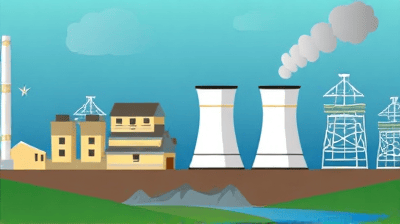
Heavy industries such as steel, cement, and chemical manufacturing are significant contributors to global greenhouse gas emissions. As the world confronts the urgent need to mitigate climate change, these sectors are under immense pressure to reduce their carbon footprints. Carbon capture and storage (CCS) technology has surfaced as a critical tool to facilitate this transition, offering a viable pathway for heavy industries to align with sustainability goals while continuing to meet global demand.
Carbon capture and storage is a technology designed to capture carbon dioxide (CO2) emissions produced from the use of fossil fuels in electricity generation and industrial processes before the gas enters the atmosphere. The captured CO2 is then transported and stored underground in geological formations, often in depleted oil and gas fields or deep saline aquifers.
The CCS process involves three main steps:
Capture: This step involves separating CO2 from other gases produced during industrial processes. Different technologies can be employed for this purpose:
Transport: Once captured, CO2 must be transported to storage sites. This can be achieved through pipelines, which are the most common method, or by using trucks and ships.
Storage: The captured CO2 is injected into deep geological formations where it can be securely stored. The storage sites are carefully selected based on geological characteristics to ensure long-term containment and prevent leakage.
CCS is considered vital for achieving global climate targets, particularly in hard-to-abate sectors such as heavy industries. The technology has several advantages:

Steel production is one of the world’s largest industrial sources of CO2 emissions, primarily due to the use of coke as a reducing agent in blast furnaces. The implementation of CCS in steel manufacturing can help decarbonize this process in several ways:
The cement industry is another major emitter of CO2, responsible for approximately 8% of global emissions. The primary challenge lies in the chemical process of calcination, which releases CO2 when limestone (calcium carbonate) is heated to produce lime (calcium oxide). CCS can be instrumental in decarbonizing cement production:
The chemical industry generates substantial emissions, particularly from processes that produce bulk chemicals like ammonia, methanol, and ethylene. CCS can play a key role in achieving emissions reductions in this sector:
While heavy industries are the focus, the integration of CCS in power generation, particularly in combined heat and power (CHP) plants, can also support decarbonization efforts in industrial processes. The capture of emissions from power plants that supply energy to heavy industries can play a vital role in reducing overall carbon emissions associated with industrial operations.
As governments implement stricter emissions regulations and carbon pricing mechanisms, CCS technologies can help heavy industries comply with these requirements, avoiding potential penalties and fostering a greener industry image. Additionally, incentives provided for carbon capture projects can help offset initial investment costs.
Adopting CCS technology allows companies to demonstrate their commitment to sustainability, enhancing their reputation among consumers, investors, and stakeholders. Companies that actively pursue emissions reduction strategies are more likely to attract environmentally conscious consumers and investment.
The development and implementation of CCS projects can create new jobs in engineering, construction, and maintenance. As industries transition to greener practices, there will be a growing demand for skilled workers in the renewable energy and carbon management sectors.
Investing in CCS technology can pave the way for enhanced infrastructure for carbon storage and utilization. This development can benefit multiple sectors, creating synergies and fostering innovation across various industries.

Despite the long-term economic benefits, the initial capital costs associated with CCS technology can be prohibitively high for heavy industries. The installation of capture facilities, transportation networks, and storage sites requires significant financial investment, which may deter companies from pursuing CCS projects.
Implementing CCS is a complex process that requires technical expertise and seamless integration with existing industrial systems. The need for skilled personnel and ongoing training can pose challenges, particularly in regions with limited technical resources.
The transportation and storage of captured CO2 necessitate the establishment of dedicated infrastructure. Developing this infrastructure can be a logistical challenge, particularly in areas lacking existing pipeline networks or suitable geological formations for storage.
Public perception of CCS technology can vary, with concerns often centered around the safety and environmental impact of storing CO2 underground. Building public trust and addressing these concerns through transparent communication and demonstrated safety measures is crucial for widespread adoption.
Ensuring the long-term integrity of CO2 storage sites is paramount to prevent leakage and environmental impacts. Continuous monitoring and maintenance of storage sites require ongoing investment and regulatory frameworks to ensure accountability and safety.
Research and development in CCS technology continue to evolve, aiming to reduce costs and improve efficiency. Innovations such as direct air capture and other novel approaches may complement traditional CCS methods, providing additional pathways for emissions reduction.
Government policies supporting the deployment of CCS can significantly influence the pace of adoption. International cooperation and knowledge sharing can also help countries mobilize resources and best practices for implementing CCS in heavy industries.
Incorporating CCS into integrated energy plans can facilitate synergies between different sectors, optimizing emissions reduction across the economy. By aligning industrial processes with renewable energy sources, the potential for minimizing carbon footprints increases.
CCS can contribute to circular economy principles by enabling carbon utilization projects and reducing waste. By finding productive uses for captured carbon, heavy industries can minimize emissions while creating value-added products.
Partnerships between heavy industries and academic institutions can foster innovation and research in CCS technology. Collaborative projects can lead to new discoveries and improved systems for capturing and utilizing carbon.

Carbon capture and storage holds immense potential for assisting heavy industries in their journey toward sustainability. By integrating CCS technologies, sectors such as steel, cement, and chemicals can significantly reduce their carbon footprints while continuing to operate in a competitive market. While challenges remain, the benefits of CCS—ranging from regulatory compliance to enhanced corporate sustainability—underscore its importance in combating climate change.
The further development of CCS technology, coupled with supportive policies, public acceptance, and infrastructure development, can create a pathway for heavy industries to go green. As we strive toward a more sustainable future, the role of CCS will be pivotal in ensuring the long-term viability of these essential sectors.